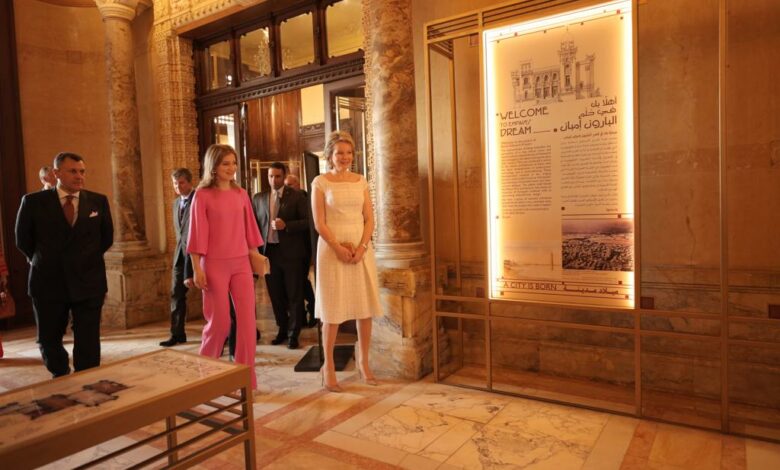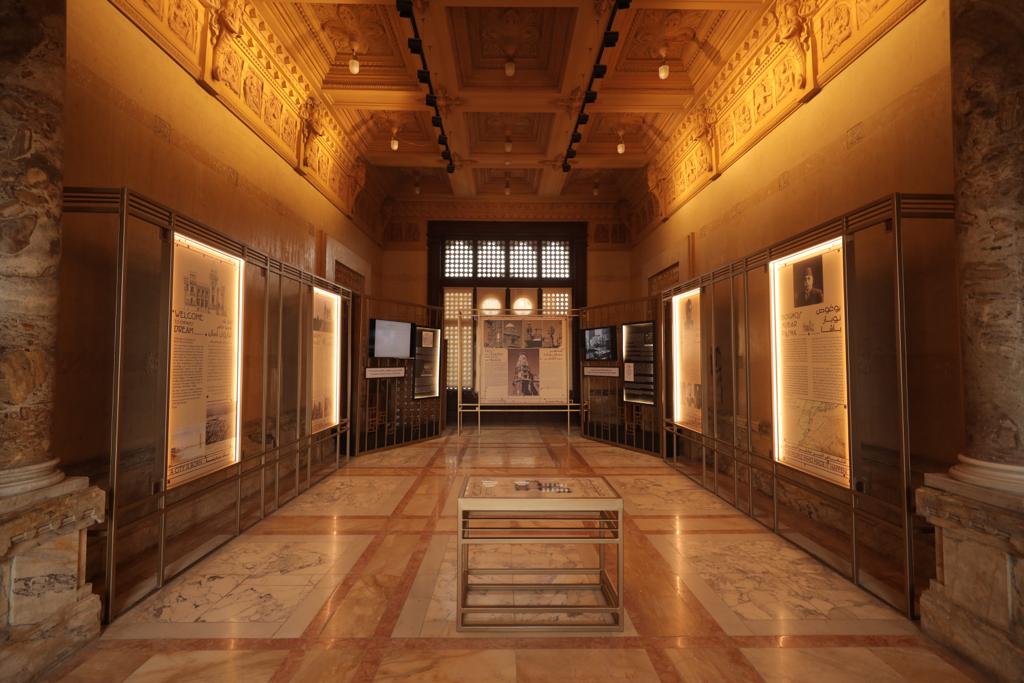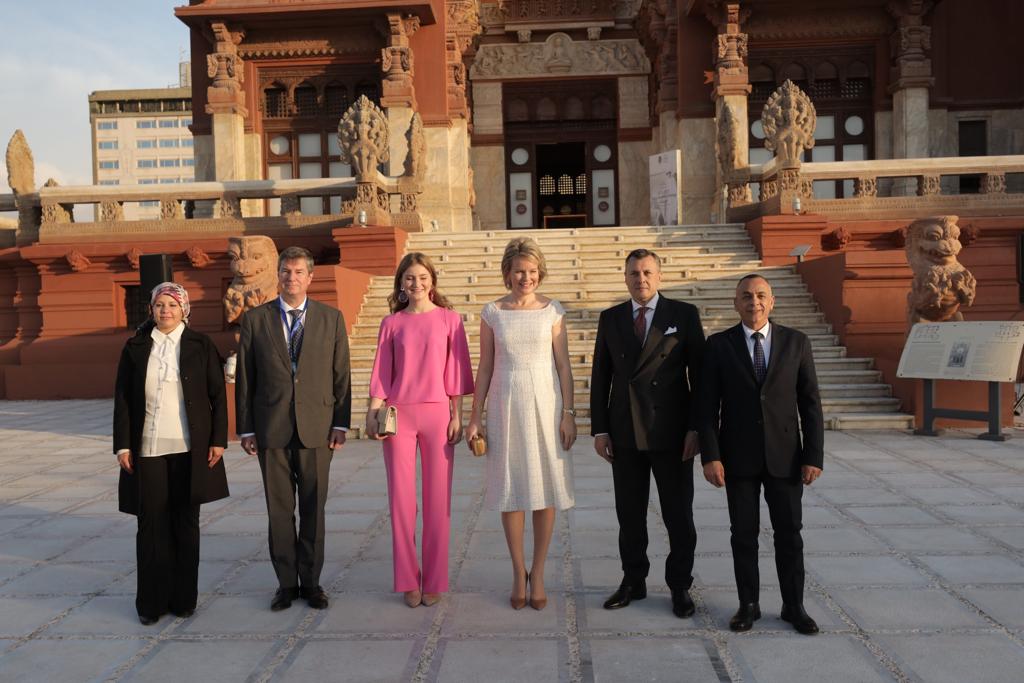
Under the title “1923-2023: Queen Elisabeth of Belgium – in Egypt”, Her Majesty Queen Matilda of Belgium, Her Royal Highness Princess Elisabeth, Duchess of Brabant in Belgium, and Egypt’s Tourism Minister Ahmed Issa, inaugurated a temporary exhibition of photographs at the Baron Empain Palace in Heliopolis.
This is part of the celebration of the 100th anniversary of the visit of Queen Elisabeth of Belgium and her son, Crown Prince Leopold, to Egypt to attend the official opening of the tomb of the golden king Tutankhamun in February 1923.
This exhibition is held under the auspices of the Belgian Royal Palace and the embassy of Belgium in Cairo, in cooperation with the Egyptian Ministry of Tourism and Antiquities.
The exhibition is scheduled to continue from March 14 to April 14.
Issa received Her Majesty the Queen of Belgium and Her Royal Highness Princess Duchess of the province of Brabant, at Baron Empain Palace, and delivered a welcome speech.
He expressed his happiness at welcoming the royals to Egypt, especially at the Baron Empain Palace, which was built by the Belgian engineer Edward Empain.
A key highlight in Issa’s speech was about Belgium’s contribution to the restoration project at the palace.
Also the memorandum of understanding was signed between Egypt and Belgium in this regard in 2019, and the palace was inaugurated on June 29, 2020 after the completion of the restoration project.
The exhibition comes on the occasion of the 100th anniversary of the visit of Her Majesty Queen Elisabeth of Belgium to Egypt in 1923 and a celebration of the friendship and cooperation relations between Egypt and Belgium, Issa said.
The exhibition is set to highlight, through a variety of photographs, films and paintings, the long-standing friendship between Egypt and Belgium, especially by highlighting the Belgian Queen’s trips to Egypt in 1923 and 1930.
The exhibition will also shed light on an aspect of the visit of Queen Elizabeth and her son Leopold to Egypt while they were attending the official opening of the tomb of King Tutankhamun in 1923.
There, they were received by Abdul Hamid Suleiman Pasha, Minister of Public Works on behalf of King Fuad.
There was also the British Lord Carnarvon, who financed The excavation work of the tomb, and the British archaeologist Howard Carter, the discoverer of the tomb.
In 1930, King Albert and his wife, Queen Elisabeth, returned to Egypt on an official visit, followed by a private trip, during which the Queen visited many archaeological sites.
During the exhibition, films documenting Queen Elisabeth’s two trips to Egypt will be shown for the first time, which have been preserved since they were filmed in the Royal Archives of Belgian Films and were recently digitized to be revived and shown again.
Other parts of the exhibition also highlight King Fuad’s visit to Brussels in 1927, in addition to a side of the Egyptian festivals that were organized in Brussels in 1926 and in Egypt in Heliopolis in 1927.
The exhibition also displays a group of photos taken from the Queen’s personal photo albums, and some photos highlighting the residence of the Belgian royal family in Egypt and photos from her travels from the archives of the Royal Palace in Brussels, the library of the Royal Museums of Art and History in Brussels.
This exhibition focuses on the close cultural and economic relations between Belgium and Egypt that date back to the nineteenth century, a large part of which highlights the story of the Baron Empain Palace, which was built by the Belgian Baron Edward Empain in 1929.
The Egyptian government started a project to restore the palace at the end of 2017 through the Engineering Authority of the Armed Forces and some different local companies under the supervision of specialists.
Belgium contributed to the project through an agreement with Egypt signed on June 29, 2020. After its inauguration, the palace became a museum documenting the history of Heliopolis through photographs, archival documents, maps, and films.








